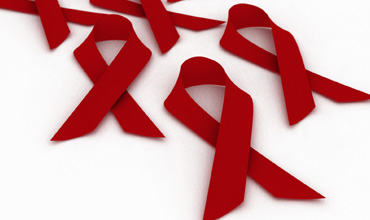HIV/AIDS, Trypanosomiasis and Malaria Interaction, a Case Report

Abstract:
A
number of infectious diseases remain neglected, such as the sleeping sickness
and often occur in individuals who are additionally affected by HIV/AIDS and
malaria, making the problem even more serious. In this article we will be
discussing the clinical interactions between HIV/AIDS, malaria and
trypanosomiasis infection.
The
discussed patient is a 34 year old female who presented with an intermittent
fever lasting approximately three months and behavioural problems persisting
for one week. The patient reported unprotected sex with multiple sexual
partners. She was diagnosed with HIV (WHO stage III), human African
trypanosomiasis stage II and malaria with high parasitemia. The patient
receives treatment for malaria and trypanosomasis but died of neurological
causes.
Discussion: There is a scarcity of data regarding the
coexistence of HIV/AIDS, trypanosomasis, and malaria in a specific patient.
This creates a complicated situation for diagnosis and treatment.
Conclusion: Co-infections through various infectious agents are
common in sub-Saharan African creating important diagnostic, therapeutic, and
prognostic implications.
References:
[1.] Afro.who.int. Overview: HIV/AIDS - WHO | Regional Office for Africa [Internet]. 2015 [cited 10 August 2015]. Available from: http://www.afro.who.int/en/clustersa-programmes/dpc/acquired-immune-deficiency-syndrome/overview.html
[2.] Blum J, Burri C,
Hatz C, Kazumba L, Mangoni P, Zellweger M. Sleeping hearts: the role of the
heart in sleeping sickness (human African trypanosomiasis). Tropical Medicine
& International Health. 2007;12(12):1422-1432.
[3.] Blum J, Nkunku S,
Burri C. Clinical description of encephalopathic syndromes and risk factors for
their occurrence and outcome during melarsoprol treatment of human African
trypanosomiasis. Trop Med Int Health. 2001;6(5):390-400.
[4.] Boraschi D, Abebe
Alemayehu M, Aseffa A, Chiodi F, Chisi J, Del Prete G et al. Immunity against
HIV/AIDS, Malaria, and Tuberculosis during Co-Infections with Neglected
Infectious Diseases: Recommendations for the European Union Research
Priorities. PLoS Neglected Tropical Diseases. 2008;2(6):e255.
[5.] Galactionova K, Tediosi F, de Savigny D, Smith
T, Tanner M. Effective Coverage and Systems Effectiveness for Malaria Case
Management in Sub-Saharan African Countries. PLOS ONE. 2015;10(5):e0127818.
[6.] Kuepfer I, Hary E, Allan M, Edielu A, Burri C,
Blum J. Clinical Presentation of T. b. rhodesiense Sleeping Sickness in Second
Stage Patients from Tanzania and Uganda. PLoS Negl Trop Dis. 2011;5(3):e968.
[7.] Lejon V, Ngoyi D,
Ilunga M, Beelaert G, Maes I, Buscher P et al. Low Specificities of HIV
Diagnostic Tests Caused by Trypanosoma brucei gambiense Sleeping Sickness.
Journal of Clinical Microbiology. 2010;48(8):2836-2839.
[8.] Lumbala C, Simarro
P, Cecchi G, Paone M, Franco J, Kande Betu Ku Mesu V et al. Human African
trypanosomiasis in the Democratic Republic of the Congo: disease distribution and
risk. International Journal of Health Geographics. 2015;14(1).
[9.] Matete G, Kajejo
O. Human African Trypanosomiasis And Human Immunodeficiency Virus Co-Infection
In Western Kenya. E Af Med Jrnl. 2005;82 (1).
[10.] Meda H, Doua F,
Laveissière C, Miezan T, Gaens E, Brattegaard K et al. Human immunodeficiency
virus infection and human African trypanosomiasis: a case-control study in Côte
d'Ivoire. Transactions of the Royal Society of Tropical Medicine and Hygiene.
1995;89(6):639-643.
[11.] Pepin J, Ethier
L, Kazadi C, Milord F, Ryder R .The
impact of human immunodeficiency virus infection on the epidemiology and
treatment ofTrypanosoma brucei gambiense
sleeping sickness in Nioki, Zaire. Am J Trop Med Hyg 47.1992;47(7)
[12.] Tack D, Holman R,
Folkema A, Mehal J, Blanton J, Sejvar J. Trends in Encephalitis-Associated
Deaths in the United States, 1999-2008. Neuroepidemiology. 2014;43(1):1-8.11.

